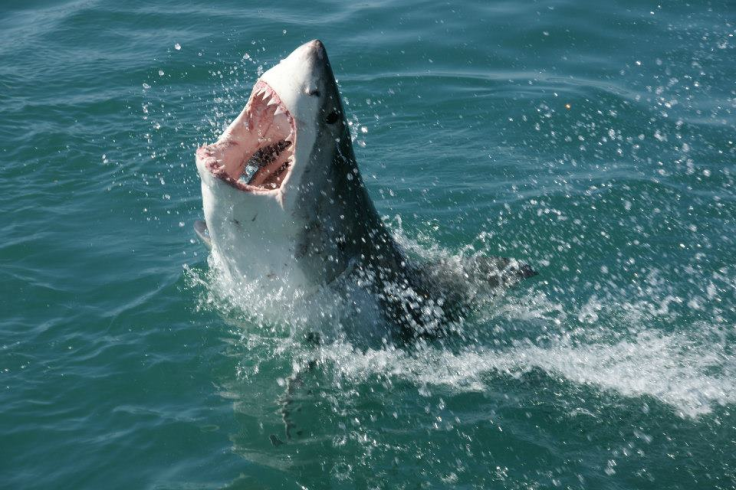Revealed: US Navy tried to use sharks as suicide bombers in top secret post-WWII project
Mary Roach has uncovered a US Navy project to weaponise sharks and turn them into remote-controlled torpedoes.
Not many people are that keen on sharks, but after World War II, there was a time when the US Navy decided that it would be a good idea to get sharks to carry bombs that could be remotely detonated whenever needed.
This rather mad idea was an actual project sanctioned by the Navy, according to science and humour author Mary Roach, who was researching sharks when she found a reference to the rather odd undertaking while writing her latest book Grunt: The Curious Science of Humans at War, which will be released on 1 September in the UK.
Sadly, Roach couldn't find out much information about the project as it was classified by the US government, so her book was published in June in the US without it. However, soon after she befriended Michael Morisy, the founder of a website called MuckRock which specialises in helping people in the US file, track and share public records requests.
Amazingly, Morisy managed to track down the people who handle Navy mandatory declassification reviews (MDR) and Roach was able to get hold of the final report relating to Project Headgear. This was a secret mission, from 1958-1971, where shark biologists and weapons specialists teamed up to convert sharks into bomb delivery systems which would detonate when they got near to an enemy's ship.

Project Headgear: Strapping bombs and electrodes to a shark
As detailed in MIT's science magazine Undark, the idea was that bombs would be strapped to the shark, which would also wear a box on its head which had a compass and could communicate with mission control aboard the warship – as well as electrodes inserted into the shark's shoulders that also connected to the box.
Since there was no way back then to remotely control the shark, the box was programmed to monitor the shark, and if it seemed to swim off course, then the box would send out an electric shock of between 5-25 volts to one of the shark's sides to get it to swim towards the desired target.
Putting aside the fact this is all incredibly cruel to the poor sharks, the report's co-authors Perry W Gilbert, noted shark expert and former director of Mote Marine Laboratory, and marine engineer James Marion Snodgrass (both now deceased) said that sharks were preferred over dolphins as the latter were too smart and could not be trusted to follow orders.
Unsurprising if animosity towards sharks were also a factor following the sinking of the USS Indianapolis in 1945 – surviving sailors were attacked by frenzied sharks and stranded in the water for four days before help arrived.
The report details that tests were carried out with the sharks on tethers and four versions of the headgear were developed between 1958-1967. But although manually shocking the sharks worked initially, later tests in swimming pools had disappointing results because the sharks unsurprisingly never played ball.
Sadly, the sharks made rubbish suicide bombers

If the electrical signals sent to the shark were too weak, the shark simply ignored them, but if the signal was too strong, the shark began to make "radical and even violent movements" and wouldn't change its course as requested.
In the end, none of the sharks would continue swimming in the desired direction towards an enemy target for more than half an hour, or three-quarters of a nautical mile. The report stated that a separate study carried out by another group of researchers found that sharks were not suitable for carrying any kind of payload of any type of weight as, well, they are not donkeys, and the project was declared to be a resounding failure.
"It's a system perhaps better suited to land targets and land mammals. A pack animal – a donkey, say, or a mule – is accustomed to carrying loads and responsive to simple left-right directional irritants, like bits and spurs. Today of course, the US military has drones to do this work. Who needs donkeys?," writes Roach.
"Homegrown terrorists, perhaps. Live donkeys are sometimes laden with explosives and let loose in a target area. I imagine an on-board command guidance system might come in handy. Project Headgear strikes me as a system whose time may have returned. Is there such a thing as a mandatory reclassification review?"
© Copyright IBTimes 2025. All rights reserved.






















